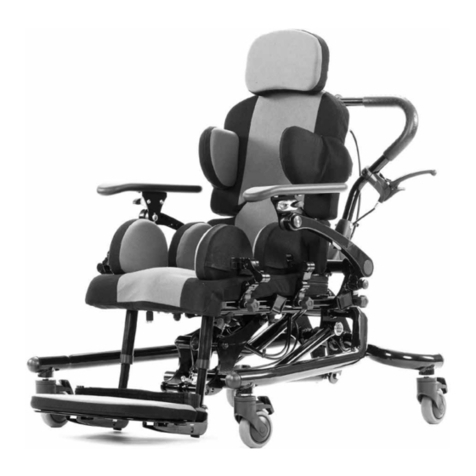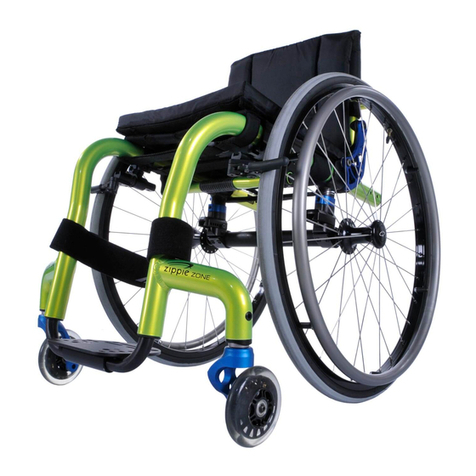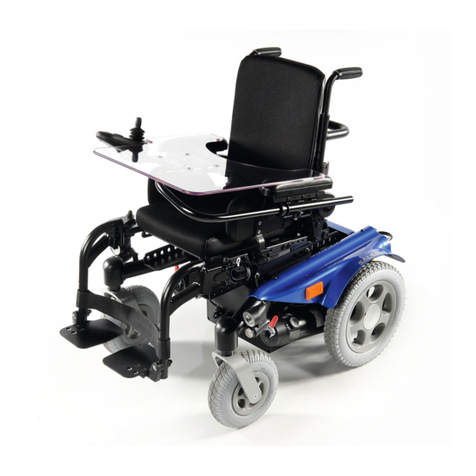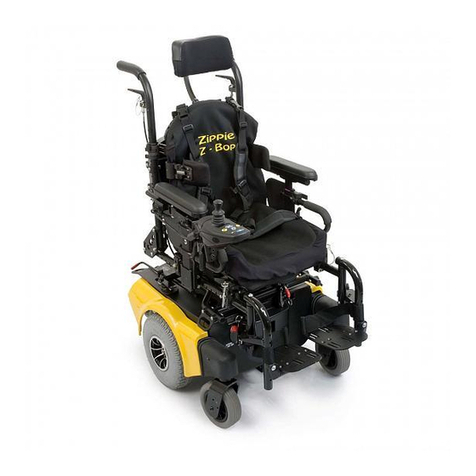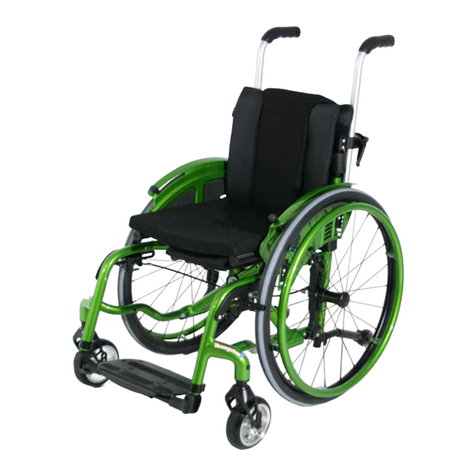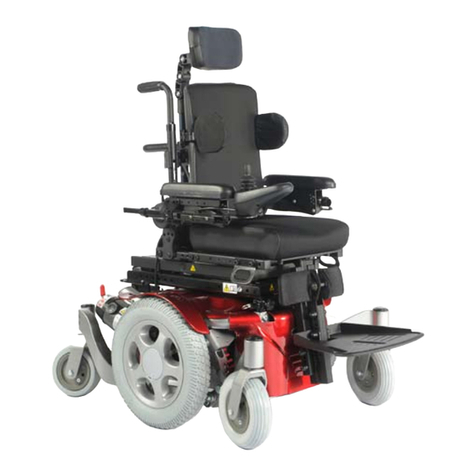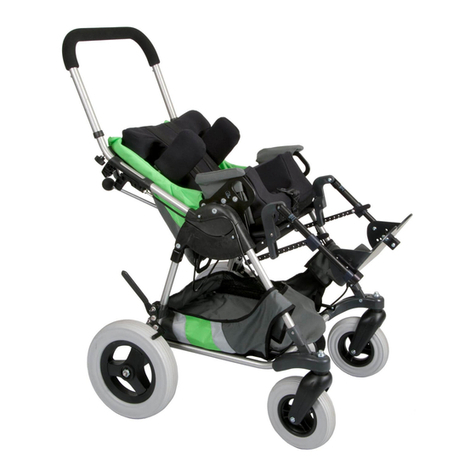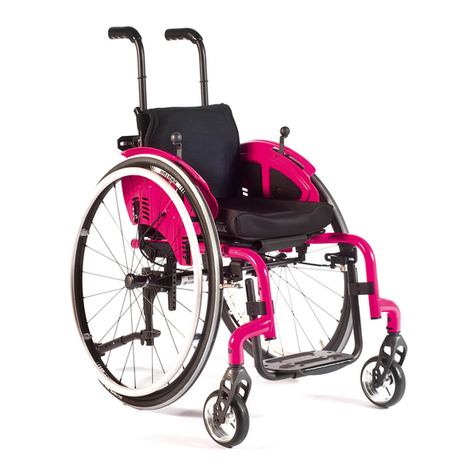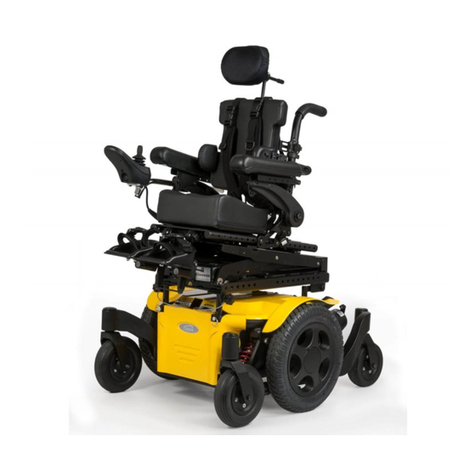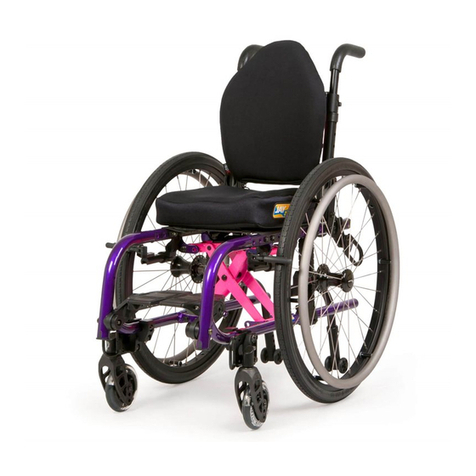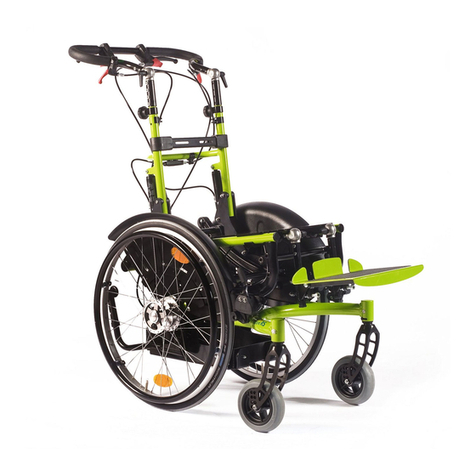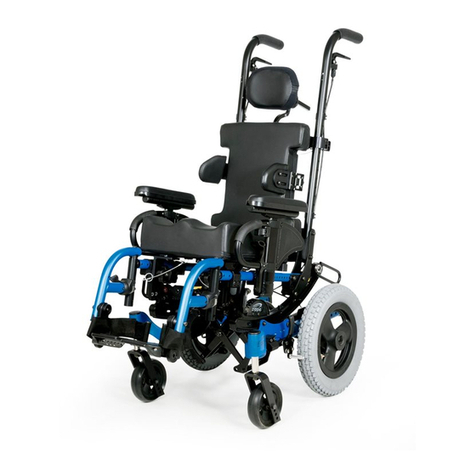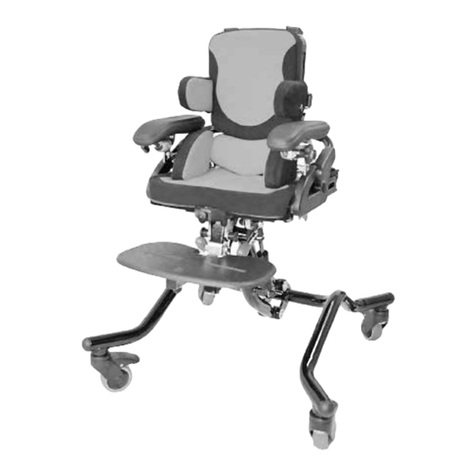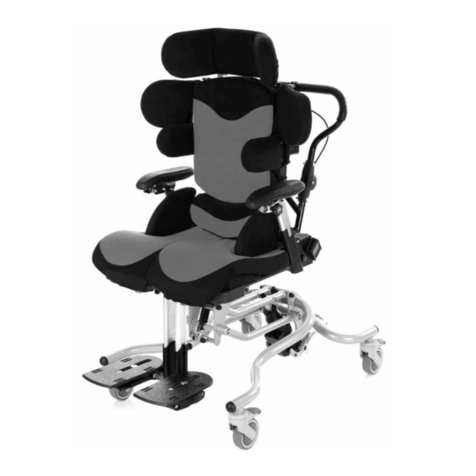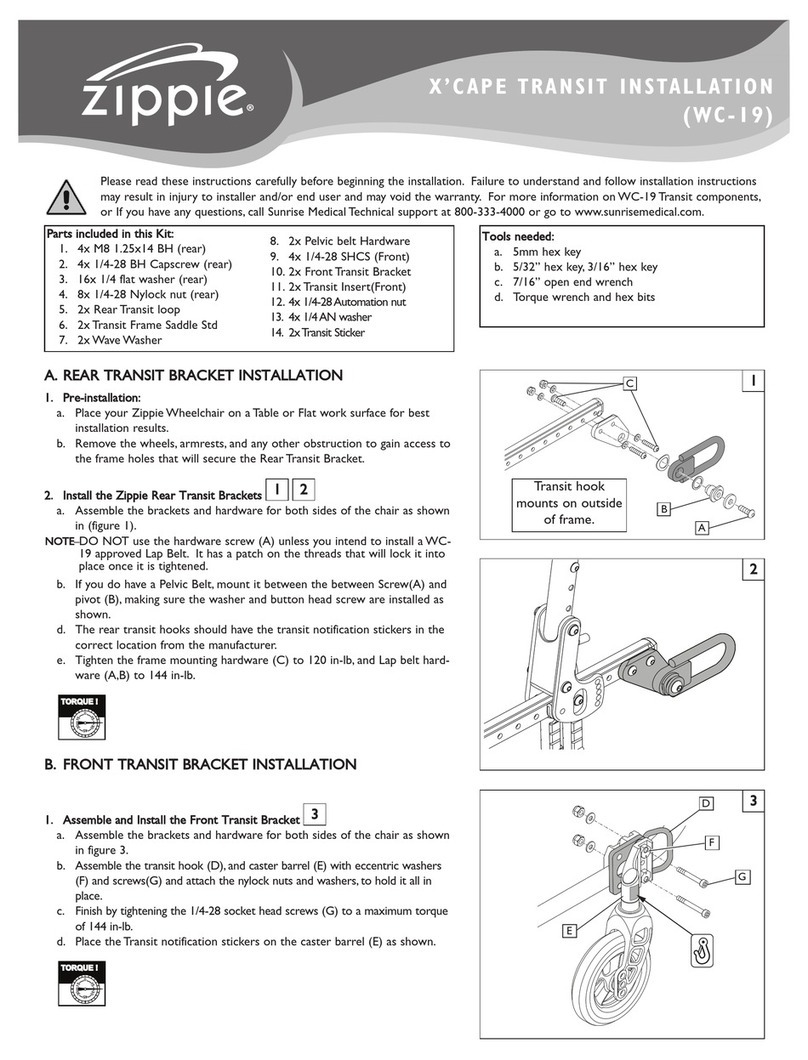
113373 Rev. C
5
ENGLISH
V. GENERAL WARNINGS
A.WEIGHT LIMIT
WARNING
NEVER exceed the weight limit of 250 pounds for the
Quickie IRIS, 350 pounds for heavy duty option, or 165
pounds for the Zippie IRIS, for combined weight of rider
and items carried. If you do exceed the limit, damage to
your chair, a fall, tip-over or loss of control may occur
and cause severe injury to the rider or others.
B. WEIGHT TRAINING
WARNING
NEVER use this chair for weight training if total weight
(rider plus equipment) exceeds 250 pounds for Quickie
IRIS, 350 pounds for heavy duty option, or 165 pounds
for Zippie IRIS. If you do exceed the limit, damage to
your chair, a fall, tip-over or loss of control may occur
and cause severe injury to the rider or others.
C. GETTING TO KNOW YOUR CHAIR
WARNING
Every wheelchair is different. Take the time to learn the
feel of this chair before you begin riding. Start slowly,
with easy, smooth strokes. If you are used to a different
chair, you may use too much force and tip over. If you
use too much force, damage to your chair, a fall, tip-
over or loss of control may occur and cause severe
injury to the rider or others.
D.TO REDUCE THE RISK OF AN
ACCIDENT
WARNING
1. BEFORE riding, you should be trained in the safe use of this
chair by your health care advisor.
2. Practice bending, reaching and transfers until you know the
limit of your ability. Have someone help you until you know
what can cause a fall or tip-over and how to avoid doing so.
3. Be aware that you must develop your own methods for safe
use best suited to your level of function and ability.
4. NEVER try a new maneuver on your own until you are sure
you can do it safely.
5. et to know the areas where you plan to use your chair.
Look for hazards and learn how to avoid them.
6. Use anti-tip tubes unless you are a skilled rider of this chair
and are sure you are not at risk to tip over.
If you fail to heed these warnings damage to your chair, a fall, tip-over or loss of
control may occur and cause severe injury to the rider or others.
E. SAFETY CHECKLIST
WARNING
Before Each Use Of Your Chair:
1. Make sure the chair rolls easily and that all parts work
smoothly. Check for noise, vibration, or a change in ease of
use. (They may indicate low tire pressure, loose fasteners, or
damage to your chair).
2. Repair any problem. Your authorized supplier can help you
find and correct the problem.
3. Check to see that both quick-release rear axles are locked.
When locked, the axle button will “pop out” fully. If not
locked, the wheel may come off and cause you to fall.
4. If your chair has anti-tip tubes, lock them in place.
NOTE– See “Anti-Tip Tubes” (Section VIII) for times you should not use them.
If you fail to heed these warnings damage to your chair, a fall, tip-over or loss of
control may occur and cause severe injury to the rider or others.
F. CHANGES & AD USTMENTS
WARNING
1. If you modify or adjust this chair, it may increase the risk of a
tip-over UNLESS you make other changes as well.
2. Consult your authorized supplier BEFORE you modify
or adjust your chair, or contact Sunrise Medical.
3. We recommend that you use anti-tip tubes until you adapt to
the change, and are sure you are not at risk to tip over.
4. Unauthorized modifications or use of parts not supplied or
approved by Sunrise may change the chair structure. This will
void the warranty and may cause a safety hazard.
If you fail to heed these warnings damage to your chair, a fall, tip-over or loss of
control may occur and cause severe injury to the rider or others.
G.ENVIRONMENTAL CONDITIONS
WARNING
1. Use extra care if you must ride your chair on a wet or slick
surface. If you are in doubt, ask for help.
2. Contact with water or excess moisture may cause your chair
to rust or corrode. This could cause your chair to fail.
a. Do not use your chair in a shower, pool or other body of
water. The chair tubing and parts are not water-tight and
may rust or corrode from the inside.
b. Avoid excess moisture (for example, do not leave your
chair in a damp bathroom while taking a shower).
c. Dry your chair as soon as you can if it gets wet, or if you
use water to clean it.
If you fail to heed these warnings damage to your chair, a fall, tip-over or loss of
control may occur and cause severe injury to the rider or others.
H.TERRAIN
WARNING
1. Your chair is designed for use on firm, even surfaces such as
concrete, asphalt and indoor floors and carpeting.
2. Do not operate your chair in sand, loose soil or over rough
terrain. This may damage wheels or axles, or loosen fasten-
ers of your chair.
If you fail to heed these warnings damage to your chair, a fall, tip-over or loss of
control may occur and cause severe injury to the rider or others.
I. STREET USE
WARNING
In most states, wheelchairs are not legal for use on pub-
lic roads. Be alert to the danger of motor vehicles on
roads or in parking lots.
1. At night, or when lighting is poor, use reflective tape on your
chair and clothing.
2. Due to your low position, it may be hard for drivers to see
you. Make eye contact with drivers before you go forward.
When in doubt, yield until you are sure it is safe.
If you fail to heed these warnings damage to your chair, a fall, tip-over or loss of
control may occur and cause severe injury to the rider or others.
